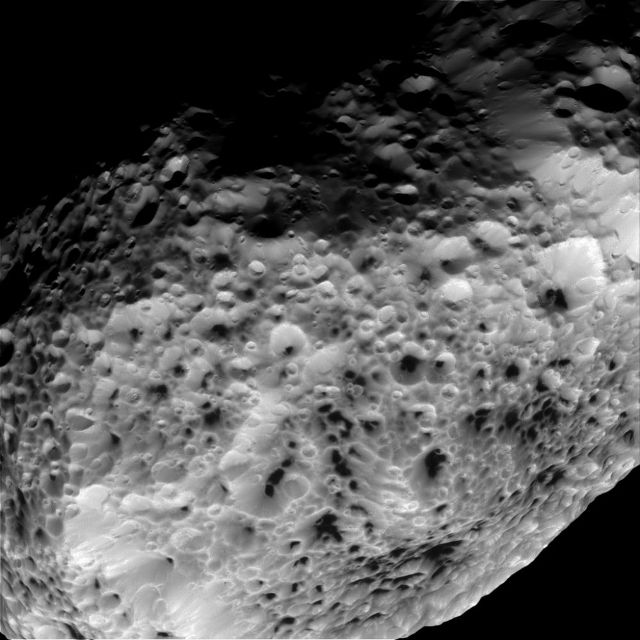This wonderful sight is brought to us courtesy of the Cassini spacecraft which has been studying Saturn and its satellites over the last decade. Enceladus can be seen above Saturn’s rings while Rhea lies below them in this picture. The tiny Atlas (only 30 kilometers across) is also supposedly captured just to the left of Rhea, expertly hidden within one of Saturn’s rings. This picture was taken using Cassini’s narrow angle camera or Imaging Science System. Cassinia was somewhere between 2 million and 2.8 million kilometers from these Saturnian moons when this picture was taken.
Tag Archives: saturn
Night time on Saturn and Tethys

Darkness falls on the night side of massive Saturn and its tiny moon Tethys. Tethys is literally quite tiny as it is just 1,062 kilometers across and in this picture, is just barely seen (thanks to being brightened by NASA in post production) in the lower left quadrant.
The Cassini spacecraft took this picture with its wide-angle camera, utilizing a special filter allows near-infrared light wavelengths. It was taken when Cassini was about 2.4 million kilometers from Saturn.
Rivers on Dione

These surface chasms on Saturn’s moon Dione are of great interests to scientists. Some parts of the surface are covered by linear features, called chasmata which is in dramatic contrast to the impact craters that one would typically see on planet, satellites and other celestial bodies. This view from a distance of 110,000 kilometers was taken by Cassini Orbiter’s narrow angle camera with North looking up on Dione.
Saturn’s rings platters

This view of Saturn’s rings was taken by the Cassini spacecraft’s wide angle camera. The picture was taken at a distance of 911,000 kilometers from Saturn and at a Sun-Saturn-Cassini, angle of 37 degrees. The rings of Saturn look like flat platters at in this picture. Also (barely) visible near the eight o’clock position, by the planet’s A-ring, is Saturn’s satellite Prometheus.
Spongy Hyperion

From this view, one may think they were looking at a rock or an organism under a microscope. But in fact this is a picture of Hyperion, one of Saturn’s moons. NASA’s Cassini spacecraft took this picture (from 38,000 km) of the odd shaped moon using its narrow angle camera.
